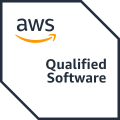For change leaders, there’s a seemingly endless amount of domains, concepts, practices, external pressures, and internal concerns. You’re constantly trying to connect the higher-level strategic outcomes to sometimes hundreds of teams. The work never stops.
Despite these challenges, how can organisations create a leverage point of change that provides tangible value in the short-term, and long-term evolutionary change, rewired for outcomes?
Over the years, TeamForm has played a critical role in helping many large, complex organisations transform. In this post, we share guiding principles for implementing the QBR, a process that is a powerful circuit breaker for organisations to progress along their transformation journeys.
What is a QBR?
A Quarterly Business Review (aka QBR) isn’t a new practice – it’s used in many different contexts and industries – for organisations and teams to regularly review on their performance and identify priorities, dependencies, and trade-offs for the next quarter.
When used as part of a quarterly planning cadence, QBRs have the potential to align hundreds of teams and improve delivery on business and customer outcomes.
When used at the enterprise level, the QBR process connects business strategy, OKRs, and workforce planning.
At its most basic, you’re answering a few key questions at the enterprise level:
- What outcomes are we trying to achieve as an organisation?
- Are we focused on the right things to achieve those outcomes?
- What capabilities and teams do we need to better deliver against those outcomes?
- What needs to change for our teams to do their best work?
Designing QBRs for high impact
From our experience, QBRs are most powerful when they are used to establish a common tempo for an entire organisation to create transparency of strategy, align on priorities, ensure the right teams are working on the right outcomes, and ultimately, drive change.
Below are five principles for designing a QBR process that can help your organisation regularly review, adapt, and deliver better outcomes for business, customers and teams.
#1: Establish a unified, common tempo
The most effective QBR processes establish regular moments where the right levels in the organisation can converge at a known frequency. It should feel lightweight enough in nature, with a rigid time constraint to ensure the process doesn’t overtake team’s focus on delivering value.
QBRs should involve many level of the organisation from executive leadership to teams – it works best when it’s not just top-down or bottoms-up, but when there’s strong collaboration between levels to build understanding and alignment.
A prototypical process would involve:
- Executive leadership: reviewing long-term strategy, priorities and OKRs every 90 days
- Tribe/demand leads: reflect on previous quarter, adapt priorities, identify challenges and plan for the quarter ahead
- Prioritisation workshop: bring different stakeholders together to prioritise, surface challenges, and make trade-offs & decisions
- QBR ceremony: either live or async, playback the outcomes of the QBR process to build shared understanding of the priorities for the quarter ahead
#2: Focus on outcomes over outputs
QBRs aren’t effective when they’re treated as a check-the-box activity. The value isn’t in the plan (because we know things usually don’t go to plan); the value is in the collaboration and conversations along the way.
Desired outcomes from a QBR process:
- Organisation has a shared understanding of priorities for the next quarter
- Leadership has made critical decisions on what to focus on
- The right teams with the right capabilities are supporting the right outcomes
#3: Make the work visible
Transparency is key to an effective QBR process. Strategy and outcomes need to be transparently shared across the organisation and re-used for central process avoiding unnecessary asks of teams. Every team should understand the strategy and how their team supports their OKRs.
A great place to start is by creating a shared QBR artefact that’s visible to the entire organisation. It should record the outcomes each value stream is aiming to achieve for the next quarter.
Transparency is the fundamental building block – making the work and outcomes visible enables you to drive a whole bunch of other important changes in the organisation: prioritisation, funding, ways of working, organisational design, etc.
“QBR has allowed us to bring together the organisation through a period of intense change supporting our T22 and T25 transformation strategies, since launching we have iterated the QBR process on a quarterly basis bringing together the company to align around our strategic outcomes and have scaled it across all leaders. In the last 18 months our published OKRs have been viewed internally 17,000 times providing transparency and alignment for our people.” - Tom Beach, Planning and Performance Executive, Telstra
#4: Progressively connect the data
The QBR process enables organisations to progressively connect multiple sources of data. While the foundational level, and the best place to start, is to review outcomes and OKR, organisations can add other layers to inform the decisions made in QBR:
- Outcomes (OKRs)
- Performance
- Stopped work
- Interaction modes
- Funding
- Workforce supply and demand
#5: Build the muscle over time
Establishing a shared QBR process across the organisation is hard. Based on experience, it helps to start small – even if the first cycle is run within a single business unit – and then scale over time.
When taken into context, introducing a unified QBR process requires a fair amount of unlearning and rewiring of organisations. The intent is to find regular moments in time to make intentional and aligned changes to the work and your teams in a way that gives teams what they need to do their best work: transparency of the “why”, clarity of outcome, and the space and time to move from forming to performing as a team.
As you get your QBR process off the ground, it’s worth conducting regular retrospectives – what’s working well? Why is this challenging? What are we learning along the way? Use this to find ways to celebrate the small wins and continuously improve the process over time.
















